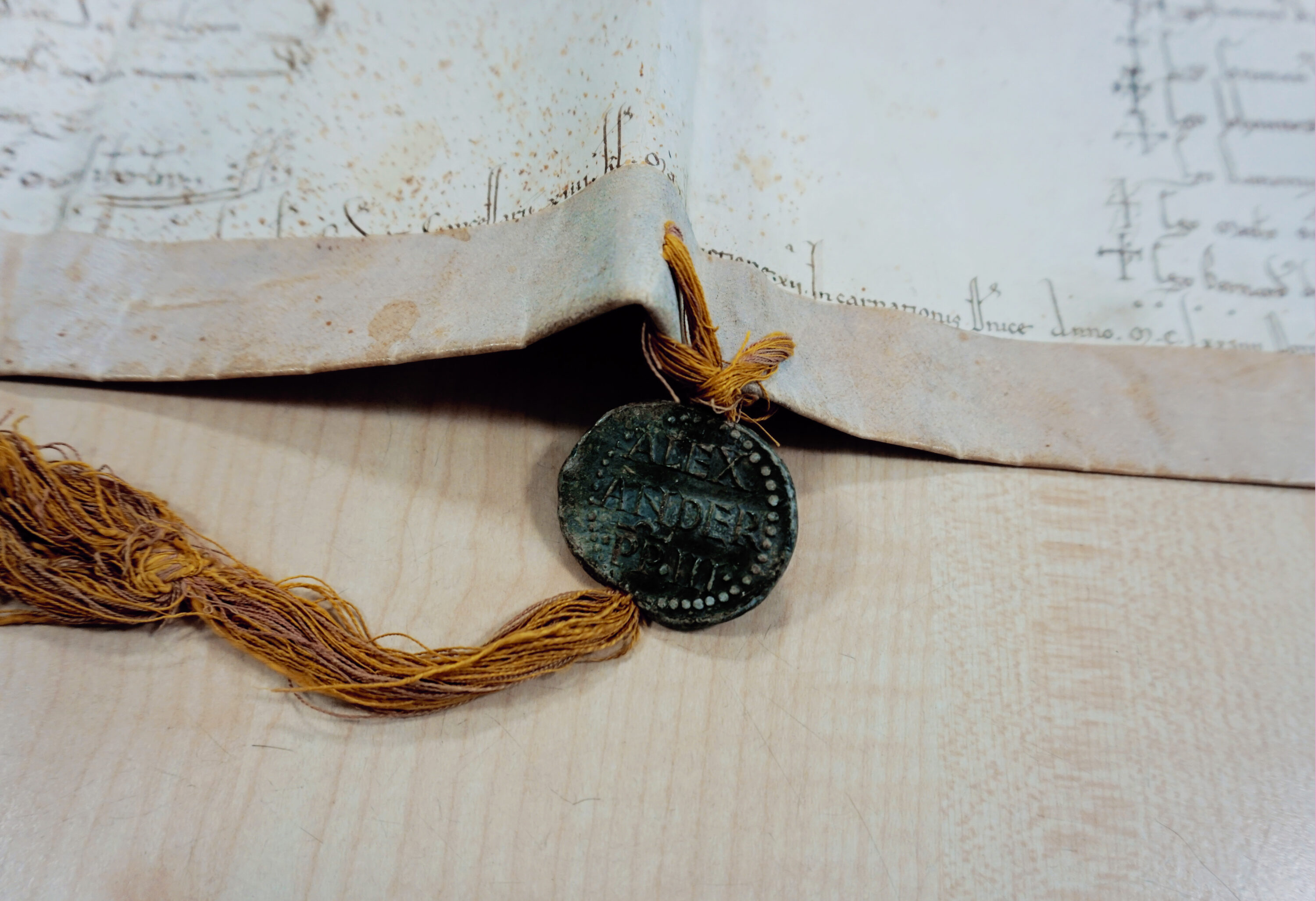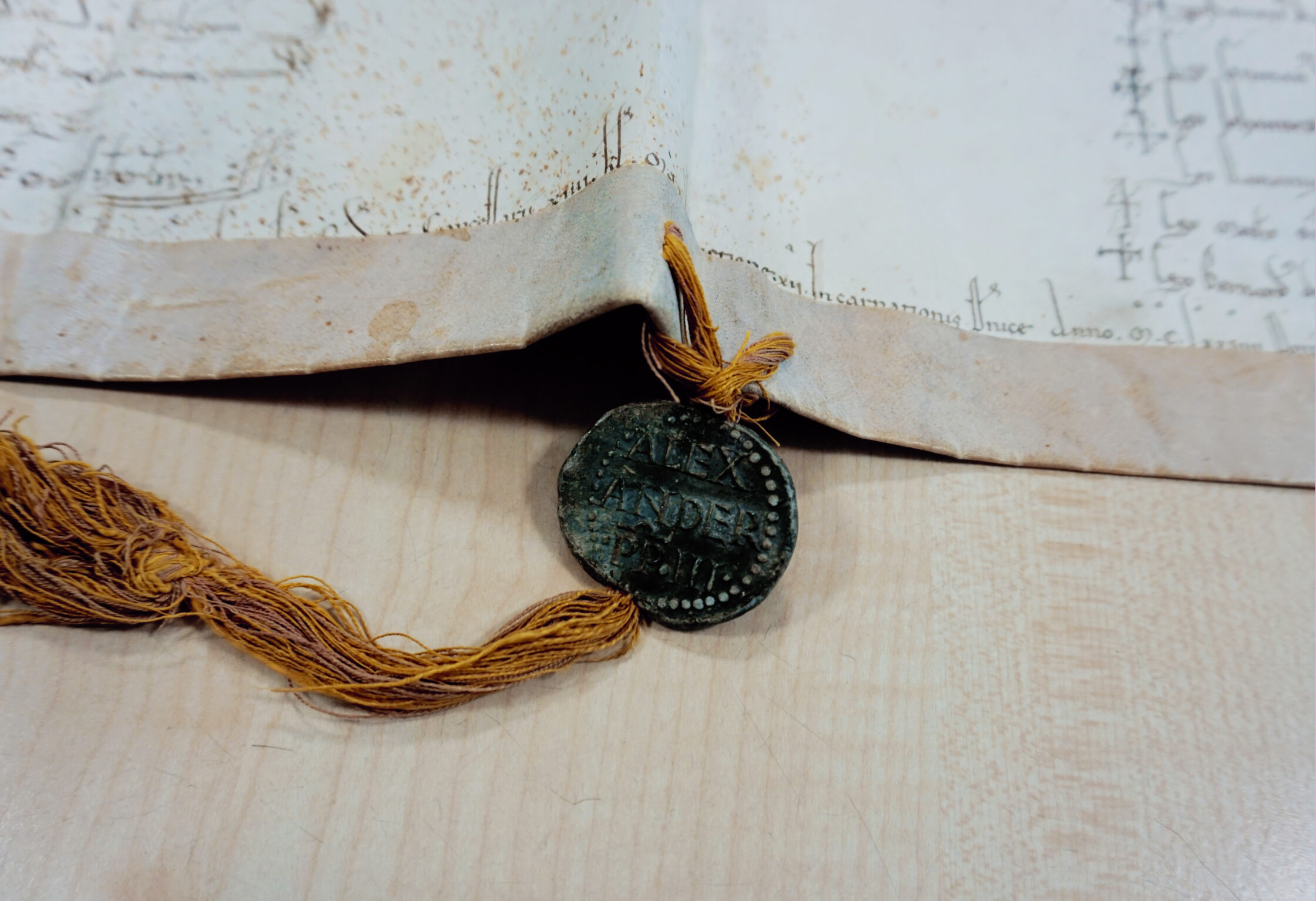
Link
https://formierung-europas.uni-koeln.de
Runtime
2023–2040
project participants
Institute of History at RWTH Aachen University, Institute of History at JMU Würzburg, CCeH. Project leads: Prof. Dr. Harald Müller (Aachen) and Prof. Dr. Martina Giese (Würzburg).
Funding
Joint project of the Bavarian Academy of Sciences and Humanities and the North Rhine-Westphalian Academy of Sciences, Humanities and the Arts, funded by the Academies’ Program.
Description
The project funded by the North-Rhine-Westphalian Academy of Sciences, Humanities and Arts focuses on the Alexandrine Schism (1159–1177) as the most significant pan-European test case of how processes and dynamics of dissociation worked and could be overcome in the Middle Ages. The aim of the project is a systematic record and analysis of the schism, building on a corpus of approximately 11,000 sources relating to the pontificate of Pope Alexander III (1159–1181) which will be digitally processed for the first time. This long-needed state-of-the-art digital editing of the entire written tradition is a prerequisite for developing a differentiated overall assessment of the modes of communication and interaction, of structures, intentions and strategies of assertion shaping the schism and emerging from it. A synoptical evaluation of the source material will make it possible to explain how the seemingly insurmountable dissociation induced by the schism led to the reconstitution of Latin Europe under the guidance of the bishop of Rome, who was henceforth accepted as an authority warranting the order, and why comparable disruptions did not occur again for centuries to come.
A digital work and communication platform collaboratively bundling national and international research on the medieval papacy will reflect the project’s European dimension and open up new ways for evaluating the material. Offering a multiform presentation of the results the platform will make the texts, selected key documents and their digitised reproductions available to the scientific community and the interested public. It also contains an area for the multi-form presentation of results, in which the texts, selected key documents and their illustrations are made available to the scientific community and the interested public.
Picture credits
Privilege of Alexander III taking the collegiate church of Saint-Dié (diocese of Toul) under papal protection, confirming its ownership and granting it the right to freely elect their provost. Rome, Lateran, February 16, 1179 (JL 13290), detail showing the leaden bull of pope Alexander III.
Épinal, Archives départementales des Vosges, G 241, n° 43 (Photography: Hannes Engl).
